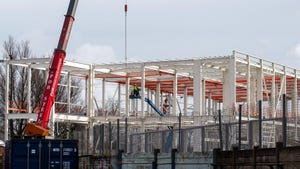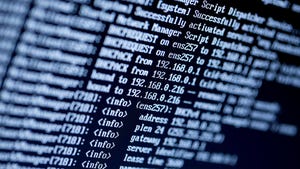EU Data Centers: Balancing Sustainability, Sovereignty, and Growing PainsEU Data Centers: Balancing Sustainability, Sovereignty, and Growing Pains
The EU data center boom brings big challenges, from energy constraints to talent shortages, according to a new report from the European Data Centre Association.

Demand for data center capacity across Europe is rising at a record pace, driven by AI adoption, digital transformation, and the accelerating shift to cloud and edge computing, a report commissioned by the European Data Centre Association (EUDCA) finds.
In 2023, colocation data centers alone contributed €30 billion ($32 billion) to European GDP, and this figure is projected to reach €83.8 billion ($90.7 billion) by 2030, according to the association’s recent State of European Data Centers 2025 report.
While the FLAPD markets – Frankfurt, London, Amsterdam, Paris, and Dublin – remain dominant in installed power, emerging regions like the Nordics, Southern Europe, and Central and Eastern Europe are quickly catching up, supported by renewable energy investments and improved digital infrastructure.
However, rapid growth comes with significant challenges, especially in terms of energy availability, workforce development, and regulatory cohesion.

The EUDCA's State of European Data Centers 2025 report explores economic impact, data sovereignty, and sustainability challenges. Image: EUDCA.
Data Center Saturation Point
According to the International Energy Agency (IEA), global electricity demand is projected to grow by nearly 4% annually through 2027, driven by sectors including data centers.
In Ireland, data centers are projected to account for 32% of the country’s total electricity consumption by 2026, up from 17% in 2022, reflecting the rapid expansion of data center infrastructure in the region.
“FLAPD is reaching saturation point,” Michael Winterson, secretary general at EUDCA, tells Data Center Knowledge. “You can’t get energy access, and the court of public opinion is quite negative on further data center development in these markets.”
That pressure is shifting investment toward countries like Portugal, Spain, and Poland, where grid access and local government support are drawing hyperscale and colocation players alike.
From Winterson’s perspective, power availability has emerged as one of the defining constraints.
“The number one issue right now is: do you have access to the grid?” he says. “If you don’t, you can’t build the data center.”
The EUDCA executive said that although the sector has the capital to invest in renewable energy and power purchase agreements, regulatory hurdles often block grid access.
“We’re engaging policymakers at the European and local levels,” he explains. “We’re telling them, ‘We will be sustainable. We will only buy renewable energy. Help us get that access.’”
Pricing is another complication. Based on marginal cost bidding, Europe’s energy pricing model can result in volatile electricity prices.
“The system is archaic,” Winterson says. “Even if a solar farm produces free energy, if a gas-fired plant is the last bidder needed to meet demand, that becomes the market price.”

Hyperscale operators like Google are leveraging FLAPD markets like Dublin for expansion. Image: Alamy.
EU Data Center Talent Shortage
The EUDCA’s latest industry report outlines a significant talent shortage, with specialized technical labor in short supply across the EU’s data center space.
Winterson says that to address this, many operators are implementing training and apprenticeship programs in partnership with local governments and technical schools.
However, he emphasizes the need for a broader approach.
“What we need to do next is take the best practices from around Europe and scale them,” he told Data Center Knowledge.
Winterson is clear on the question of digital sovereignty: Europe’s opportunity lies in building a unified digital market.
“In Europe, the data belongs to the person who creates it,” he says. “That’s fundamentally different from the U.S., where data belongs to the platform, or China, where it belongs to the state.”
He argues that by aligning around GDPR and enabling secure data movement across borders, Europe could build a digital system to rival global giants.
“Europe has one of the most amazing public datasets in the world,” Winterson says. “We need to act like it.”
Growing Pains
According to an August 2024 report from Synergy Research Group, of the top 20 markets for hyperscale data centers, 13 are in the U.S., four are in the APAC region, and just three are in Europe.
In the colocation data center market, Europe first enters the list in third place thanks to London, U.K., followed by Frankfurt, Germany, which placed seventh. Markets in Paris and Amsterdam were featured outside the top 10.
In terms of data centers, hyperscale “own-build” data centers from Meta, Google, AWS, and Microsoft are different from large data centers operated by colocation companies, including Equinix, Digital Realty, and NTT.
John Dinsdale, chief analyst and managing director at Synergy Research Group, said the drivers and benefits in terms of location are different for both models.
“Colocation data centers will always tend towards being near large concentrations of economic activity,” he explained. “In Europe, that means London, Frankfurt, Paris and Amsterdam are the most popular locations.”
For hyperscale operators building their own data centers, proximity to end users isn’t such a big deal so they will be more influenced by things like cost of real estate, cost and availability of power, ease of doing business, local regulations, and access to network infrastructure.
“For hyperscale operations, Ireland has so far been the preferred location, followed at a distance by the Netherlands and Germany,” Dinsdale says.
When looking to the future, he singles out Spain and Sweden as two countries experiencing much activity and increasing in importance.

Meta Odense Data Center in Odense, Denmark. Image: Alamy.
Strategic Engagement Needed
Winterson says the EU must shift from reactive policymaking to more strategic engagement with the data center industry.
“We’ve got to stop just waiting and responding to consultations that come in because some of these consultations are irrelevant,” he says.
Instead, Winterson argues that the EU should focus on structural challenges like energy access and regulatory complexity.
“We need to start addressing the fundamental issues,” he explains, noting that the EUDCA recently published a manifesto outlining its top policy priorities. “Priority number one [is to] fix the energy problem,” he says. “There are things that can be done in this current administration to fix some of these energy problems.”
Read more of the latest data center regulation news
Winterson questioned past efforts that missed the bigger picture, pointing to years-long policy roadmaps with marginal benefits.
“Bad legislation, failing to execute the legislation correctly, or failing to get the big picture is the fundamental issue,” he says.
Without cohesive, cross-sector action, the EU risks undermining its own digital ambitions, he cautions.
About the Author
You May Also Like
.webp?width=100&auto=webp&quality=80&disable=upscale)
.webp?width=400&auto=webp&quality=80&disable=upscale)







